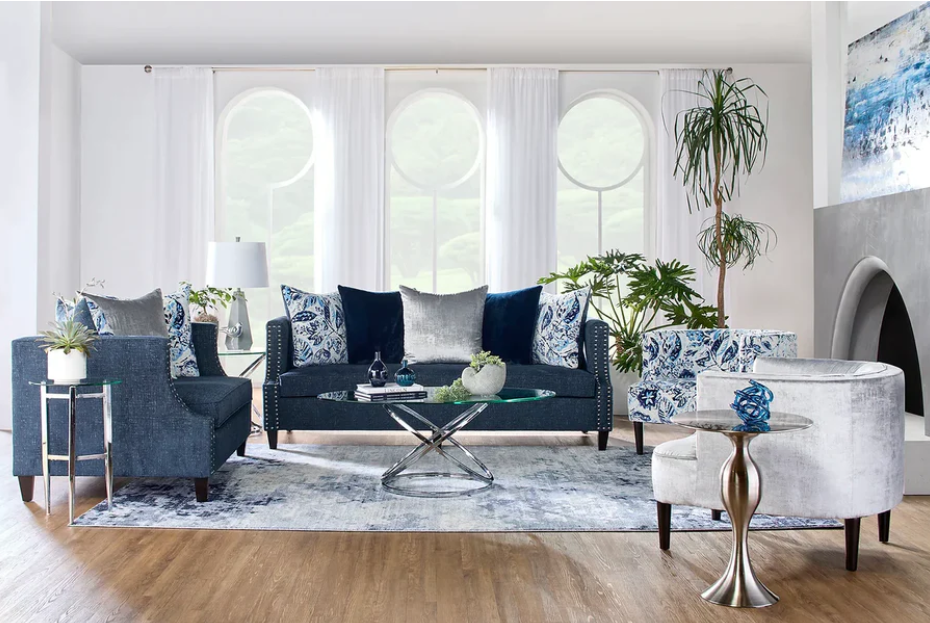Decorating your living room can be quite a task, but it also gives you a chance to showcase your style and create a welcoming space. The living room is one of the most used spaces; it’s where you host guests, relax with family, and unwind after a long day. This complete guide will walk you through setting up a living room step—by—step, making it as usable as it is beautiful.
Understanding Your Space
Assessing the Size and Layout
How big is your living room, and what is its layout like? Factor in the size of the room, taking into account the location of doors, windows, and electrical outlets. Noting the size of your space will help you make informed decisions about arranging and sizing your Furniture.
Identifying Your Needs
Think about how you use your living room. Do you entertain often, or is it mostly a space to relax? Understanding your needs will help you make design decisions. If you like to entertain, for instance, you might focus on comfortable seating and an open layout.
Choosing a Color Palette
The Importance of Color
Color can change the atmosphere of a room completely. A carefully selected color palette ties it all together and elevates the general vibe of your living room.
Selecting the Right Colors
- Neutral Base: Use Neutral Base: Begin with walls and bigger furniture in neutral colors. Such shades — pale whites, beiges, and grays — offer a versatile canvas that can be matched with a range of decor styles.
- Accent Colors: Add pops of bold accent colors through accessories and decor such as cushions, artwork, or rugs. Choose colors that inspire you and will invigorate your space.
Eve Furniture Selection
Choosing the Right Furniture
Choosing suitable furniture is important for comfort and organization. Here are a few tips to remember:
- Scale and Proportion: Select furniture that is proportional to the size of your living room. In tight quarters, steer clear of oversized pieces that will cause the space to feel cramped.
- Style Cohesion: Choose furniture that is in harmony with your style No matter whether your style is modern, traditional, or eclectic, a degree of consistency is essential.
Essential Furniture Pieces
- Sofa: The sofa serves as the centerpiece of the living room. Choose a comfortable, stylish option that works with your space. Think sectional sofas for big spaces or loveseats for smaller spaces.
- Coffee Table: A coffee table can be a functional centerpiece. If you need storage, pick a design that fits your sofa and offers storage options.
- Accent Chairs: Adding accent chairs is a great way to increase seating and add style. Experiment with different coloring and designs to give it your twist
Lighting
The Role of Lighting
The lighting can change the whole atmosphere of your living room. The key is to design a layered lighting scheme that includes ambient, task, and accent lighting.
Types of Lighting
- Ambient Lighting: This offers general lighting — ambient light. Overhead fixtures, chandeliers, or recessed lights will also do a great job illuminating the space.
- Task Lighting: Place table lamps or floor lamps in key reading or workspace areas.
- Accent Lighting: Use spotlights or wall sconces to illuminate artwork or architectural design elements and direct attention to the feature.
Textures and Patterns
Adding Depth with Textures
For instance, mixing textures in a Modern living Room Sets can help to layer and provide interest. Mix materials like wood, metal, fabric, and glass to create a vibrant space.
Using Patterns Wisely
Patterns can bring a room to life, but use them sparingly and don’t go overboard. Choose patterned fabrics for throw pillows or rugs and pair them with solid colors to achieve harmony.
Accessories and Personal Touches
The Importance of Accessories
Accessories are the final touches that give your living room character. They can enable you to tell your personality and style.
Key Accessories to Consider
- Artwork: Select artwork that speaks to you and coordinates with your color palette. Take a gallery wall approach for a more personal touch, combining framed art and photographs.
- Throw Pillows and Blankets: Add texture with throw pillows and blankets and comfortable seating. Mix various patterns and textures for interest.
- Plants: Introduce lushness by way of indoor plants. These not only decorate your living room but also purify the air and make the place much more comfortable.
Creating a Focal Point
Importance of a Focal Point
All spaces have a focal area for the eye to rest on. It can be a fireplace, a piece of artwork, or a statement furniture piece.
Enhancing the Focal Point
Once you’ve achieved your focal point, arrange furniture around it to establish a natural flow. Do not fill the area with clutter, as this will lessen its overall effect.
Layout and Flow
Arranging Furniture for Optimal Flow
Lexicon for Optimal Functionality Layout of your living room And have enough space to walk around comfortably.
Common Layouts to Consider
- Traditional Layout: Faces of furniture pieces encourage conversation (sofas and chairs face each other).
- Open Concept Layout: Create separate zones in open areas through the arrangement of rugs and furniture but allow for fluidity throughout.
Personalizing Your Space
Infusing Your Personality
Your living room must have the personality and style that is more you. Add items that tell your story, like family photos, travel souvenirs, or heirlooms.
Changing with the Seasons
Try decorating to the seasons. Simply swapping throw pillows, blankets, and artwork can provide a new look in your living room without a complete renovation.
Practical Tips for Decorating
1. Start with a Vision Board
If ideal living room decoration ideas sound appealing to you then why not create a vision board? Gather images, color swatches, and materials that excite you. This will give you something to reference during the decorating process.
2. Budget Wisely
Set a budget for your living room decor and stay within it. Focus on the essentials and imagine making some accessories yourself to save money.
3. Take Your Time
Furnishing a living room is time-consuming. Don’t rush the process of deciding, give yourself time to find pieces that only suit your style.
4. Experiment with Layout
And before committing to any permanent changes, try out different furniture arrangements. Lay painter’s tape on the floor to tape out the furniture dimensions to see how it fits in the space.
Conclusion
Your living room is an area of your house where you can create a functional space that also showcases your aesthetics. With thoughtful attention to the arrangement, color palette, choice of furniture, and accessories, you can make your living room a cozy and inviting retreat. Keep in mind that a balanced and harmonious design is crucial to a well-decorated living room, so don’t rush to create a space you enjoy.






